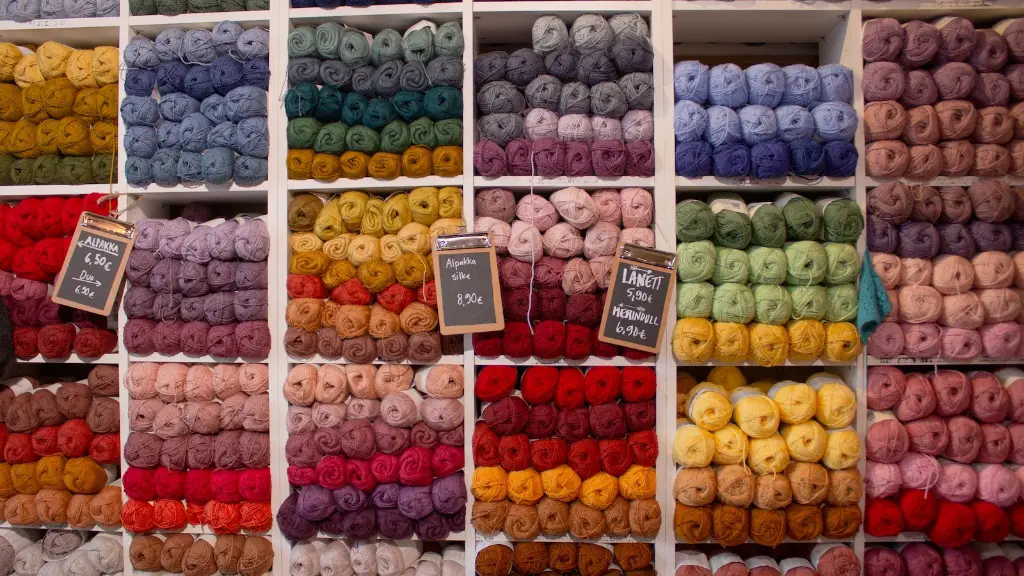How to Make a Teddy Bear With a Sewing Machine
Giving someone a gift of a handmade stuffed animal is a great way to show your love and appreciation. Making a teddy bear with a sewing machine is an easy task and allows you to create an adorable and personalised stuffed animal to give to a special person in your life. Here are the steps you need to take to make your own teddy bear.
Choose Fabric
The first step to creating your teddy bear is to select the fabric you will use. Choose a fabric that is soft and fluffy, such as fleece, faux fur, or minky, for the best results. When selecting fabric for the bear’s limbs and head, make sure to select fabric that is thin enough for the sewing machine to easily stitch through. Additionally, select fabric that is colourfast, as you do not want to have the bear’s colours fade after washing.
Pattern and Trace
Next, select an existing teddy bear pattern to trace. You can also modify existing patterns to create new designs. When tracing the pattern, make sure that you are left with a seam allowance that is between 1/4 inch and 1/2 inch. After tracing, carefully pin the two pieces of fabric together, then separate and set aside.
Attach Limbs and Head
First, attach the limbs to the body of the teddy bear. Be sure to place the right sides of the fabric together and stitch them together with the sewing machine. To attach the head to the body, make sure to align the marks on the fabric pattern and stitch the two together. After attaching the limbs and head, turn the bear right side out.
Stuff and Sew
With the stuffing of the teddy bear, it is important to ensure that the stuffing is evenly distributed and that the bear is filled without becoming overly floppy. To do this, use a combination of stuffing and beans, as the beans will help the bear keep its shape. When that is done, make sure to sew the opening of the teddy bear completely closed to ensure that the stuffing stays inside.
Add Trim, Embellishments, and Faces
After stuffing, it is time to add the finishing touches to the teddy bear. This can include adding buttons, ribbons, and other embellishments to the bear’s design. Additionally, the teddy bear can also be given a face with felt pieces sewn on to give it a unique and personalised look. Attaching these additional details with a sewing machine is the best way to ensure that the fabrics are securely sewn on and will not come off.
Attach a Hanger
Finally, to give the teddy bear a more professional look you can attach a hanger to the back of the bear. This will also make it easier to hang the bear up. To do this, use the sewing machine to attach a ribbon to the back of the bear, making sure to leave the ends of the ribbon open so the bear can be hung up.
Test it Out
When you have finished the teddy bear, make sure to test it out. Give the bear a few hugs and turns to make sure that the limbs are securely attached and that the stuffing is evenly distributed. Additionally, check for any loose stitching or gaps and make sure that the embellishments are securely sewn on. Once the bear passes the test, it is ready to be gifted.
Materials You Will Need
To make a teddy bear with a sewing machine, you will need various materials. This includes fabric of your choice, pins and scissors, thread, stuffing, a pattern, felt, ribbon, and other embellishments of your choice. Additionally, you will also need a sewing machine and a few other basic tools, such as a measuring tape and chalk.
Tips and Techniques
If this is your first time making a teddy bear with a sewing machine, it is a good idea to practice stitching on scrap pieces of fabric. This will help you get used to stitching around the edges of the fabric and make sure that the stitches are even and tight. Additionally, keep in mind that teddy bears are often made with tiny details and decorations, so take the time to make sure all the details are accurate and are securely sewn on.
Storing Your Teddy Bear
When not in use, it is important to make sure your teddy bear is stored in a safe and dry place. Make sure that the bear is not in a place with too much heat or humidity, as these can damage the fabric and the fabric’s colours can fade. Additionally, when storing the teddy bear, make sure to wrap it in an acid-free paper or fabric in order to protect it from the dust.
Care and Maintenance
In order to keep your teddy bear in good condition, it is important to be aware of how to best care and maintain it. If your teddy bear is made of fabric that is machine-washable and colourfast, it is safe to put it in the washing machine and dryer. For all other types of fabric, it is best to spot clean the bear with a soft cloth and mild detergent. Additionally, make sure to check the bear’s eyes and nose often to make sure they are securely sewn on and not coming off.
Repair and Alterations
If any part of the teddy bear becomes damaged, you can easily repair it with a sewing machine. You can replace or patch ripped fabrics or sew back on any buttons that have come off. Additionally, teddy bears are easy to alter and redesign. You can add new embroidery or decorations and adjust the pattern to create new looks.



